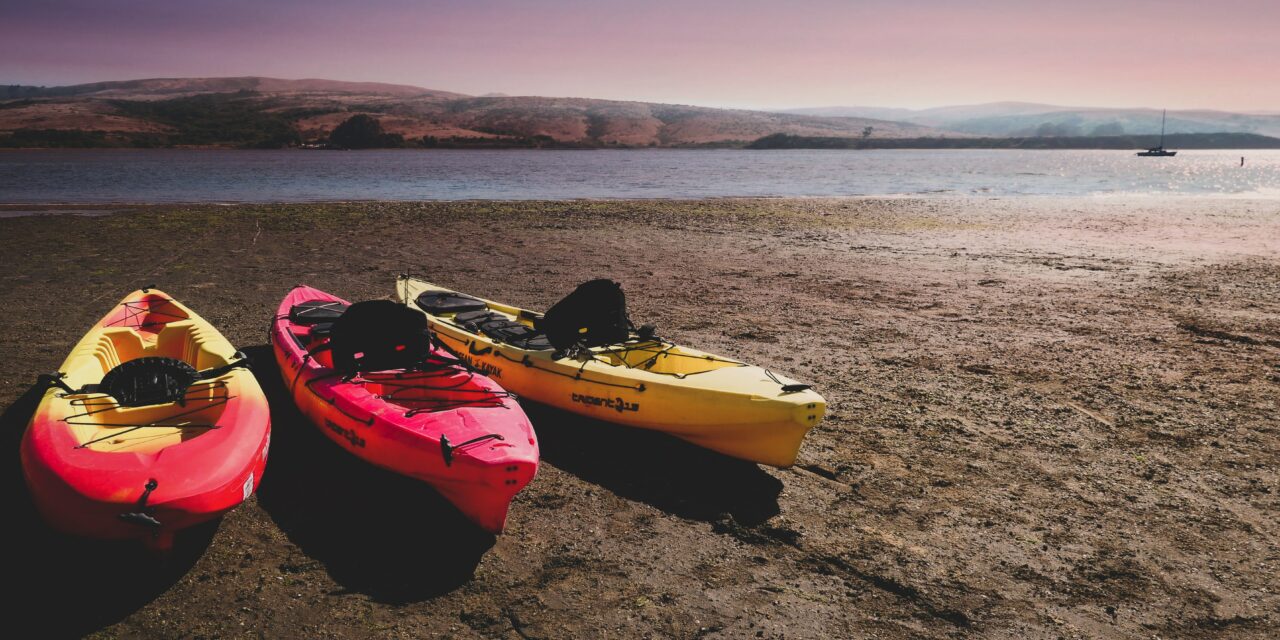Kayaks are sturdy and resilient on the water, but ensuring that they stay that way requires proper storage. Gaining a better understanding of the best way to store a kayak is necessary to ensure that your kayak remains in top shape once you are ready to hit the water again.
If you have ever wondered how or where to store a kayak, these simple tips can guide you towards the best self-storage solutions for you. Proper kayak storage often requires some planning, so be sure to weigh your options, prepare for the off-season ahead of time, and be mindful of storage unit tips as they will help with the process.
Indoors or Outdoors?
Although you use your kayak on the water, it’s not always the best option to store it outdoors. Exposure to outdoor weather will weaken the hull of your kayak, its gear, and reduce its longevity. In particular, exposure to UV light, heat, dust, and dirt can all pose a risk to your kayak. The most convenient place for indoor kayak storage would have to be your garage. What is the best way to store a kayak in the garage? Depending on the size of your garage, you can either mount the kayak on a wall, hang on the ceiling with a suspension system, strap it upright on minimal wall space, or set it on portable stands.
Indoor storage is the best option. If you don’t have room in your garage or a spare room, consider storing your kayak at a self-storage unit. Personal storage units fulfill two basic requirements for storing your kayak: limiting exposure to the elements and limiting access by other people. Storage units with security features like those offered at Price Self Storage facilities, including computerized gate access, security cameras, and well-lit facilities, offer the best option for limiting unwanted access while your kayak is in storage. Pick the right storage unit size by reviewing the storage size chart.
Clean It First
Before placing your kayak into storage, you’ll want to give it a thorough cleaning. Give your kayak a freshwater rinse followed by mild soap and water. Avoid any harsh cleaning chemicals that can damage the hull of your kayak. If you aren’t sure what to use to clean your kayak, consider contacting the manufacturer and seeing what they recommend.
When cleaning your kayak you’ll want to remove any dust, dirt, buildup, salt, or other grime before storage. Once you have thoroughly cleaned your kayak, allow it to dry completely before you put it into storage.
Off the Ground and Even Weight Distribution
There are two key factors you’ll need to consider when determining how to store your kayak. These are:
- Storing your kayak off the ground.
- Evenly distributing the weight of the kayak to avoid pressure points.
The risk with improperly storing your kayak is that you can deform your hull. Uneven pressure due to improper long term storage can leave you with a damaged kayak, so be mindful of these two principles at all times when you are figuring out your storage solution.
Since you need to store your kayak off the ground, you’ll need something to store it on. A storage rack and webbing are two of the most common solutions for hanging a kayak, and there are a wide variety of options on the market. Suspending the kayak on thick safety straps that support the hull but conform to its shape is a good option, particularly in a cramped storage space like your garage.
Now, you might be asking, “how big of a storage unit do I need?” If you choose to store your kayak in a storage facility, consider the size of your unit and the materials needed to store it properly. A portable kayak stand will have a piece of webbing suspended upon a frame. You will be able to line up multiple frames and rest the kayak on them. Since you are in a storage unit, you won’t want to install anything permanent, so portable boat stands offer an excellent way to easily give your kayak a supportive and sturdy solution to rest on.
Once you find an appropriate solution to rest your kayak on that allows for even weight distribution, avoid storing or leaning anything on top of your kayak. While it may be tempting to store your paddle or other kayaking equipment in or on your boat, resist the temptation and store your items nearby.
Closing Thoughts
Storing your kayak doesn’t have to be difficult if you follow some basic principles of care. The first is that you should seek out somewhere indoors to store it. Price Self Storage offers a great solution for indoor storage. Our facilities will help limit exposure to the elements and minimize unwanted access for your kayak and other items.
Thoroughly wash your kayak before you store it. Rinse it with fresh water and use mild soap and water to remove any dirt, salt, or grime. Give it some time to dry completely before you stow it in your storage facility.
Once you are ready to store your kayak, ensure that your storage solution allows for even weight distribution and has no pressure points on your hull. Portable boat storage stands are ideal for spaces like storage units where you can’t install a more permanent solution. As a rule of thumb, ensure that you have support roughly every one-third of the hull.
By following these simple rules for kayak storage, you’ll avoid damage to your kayak and be ready to hit the water again at any time. To learn more about local storage units for your kayaking and other equipment, please contact Price Self Storage today.
Sources
- https://www.rei.com/learn/expert-advice/kayak-storage.html
- https://www.austinkayak.com/blog/2016/12/dos-and-donts-of-winter-kayak-storage/
- https://www.lifetime.com/blog/post/winter-kayak-storage-tips










